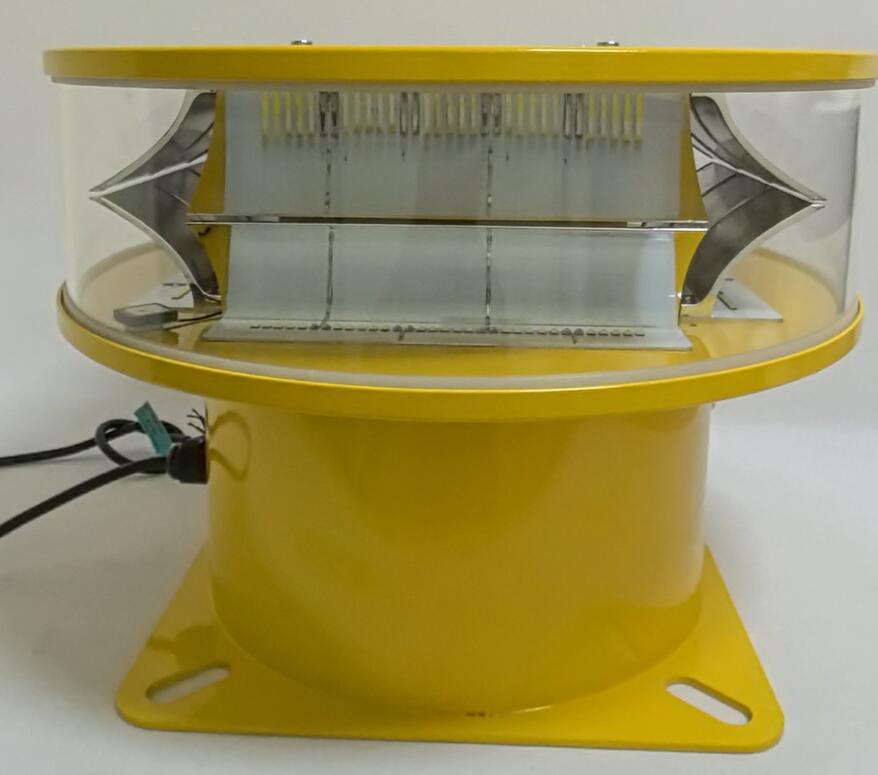Aviation Warning Lights: Guardians of the Skies in Modern Infrastructure
In an era of rapidly expanding urban landscapes and towering structures, aviation warning lights serve as silent sentinels protecting both aircraft and ground installations. These specialized lighting systems are engineered to mark high-rise buildings, communication towers, wind turbines, and other obstacles that could pose collision risks. This article examines the critical role of aviation warning lights, their classifications, regulatory frameworks, and emerging innovations shaping their future.
Why Aviation Warning Lights Matter
The primary purpose of aviation warning lights is to enhance visibility for pilots, particularly during nighttime or adverse weather conditions. Without these lights, tall structures would blend into the dark sky, increasing the likelihood of mid-air collisions or crashes. Their importance is underscored by historical incidents where inadequate obstacle lighting contributed to aviation disasters.

Key functions include:
Collision Prevention – Clearly marking obstacles to ensure safe navigation.
Regulatory Compliance – Meeting international aviation safety standards.
| aviation warning light |
Adaptability – Functioning in extreme weather, from heavy fog to storms.
Types of Aviation Warning Lights
Different structures require varying intensities and configurations of warning lights. The three primary categories are:
1. Low-Intensity Warning Lights (Type L-810)
Application: Structures under 45 meters (e.g., small towers, cranes).
| aviation warning lights |
Characteristics: Steady red lights, cost-effective, and low maintenance.
2. Medium-Intensity Warning Lights (Types L-864 & L-865)
Application: Structures between 45–150 meters (e.g., telecom towers, high-rises).
Characteristics:
L-864: Red flashing lights.
L-865: White flashing lights (used in areas with minimal light pollution).
3. High-Intensity Warning Lights (Types L-856 & L-857)
Application: Structures exceeding 150 meters (e.g., skyscrapers, tall antennas).
Characteristics: Bright white strobes visible from long distances.
Global Regulations and Standards
To ensure uniformity and safety, multiple regulatory bodies govern the use of aviation warning lights:
FAA (Federal Aviation Administration) – AC 70/7460-1L
Specifies lighting requirements based on structure height and location.
Mandates dual lighting systems for very tall structures.
ICAO (International Civil Aviation Organization) – Annex 14
Provides international guidelines for obstacle lighting.
Ensures consistency across different countries' aviation laws.
IEC (International Electrotechnical Commission) – 61400-24
Focuses on wind turbine lighting to minimize aviation risks.
Non-compliance can lead to penalties, increased liability, and higher insurance costs.
Technological Innovations in Aviation Warning Lights
Advancements are making these systems smarter, more efficient, and environmentally friendly:
1. LED Technology
Replaces traditional incandescent bulbs with energy-efficient, long-lasting LEDs.
Reduces maintenance frequency and operational costs.
2. Aircraft Detection Lighting Systems (ADLS)
Uses radar or transponder signals to activate lights only when aircraft are nearby.
Minimizes light pollution and energy consumption.
3. Solar-Powered Warning Lights
Ideal for remote locations without reliable power grids.
Eco-friendly and cost-effective over time.
4. Smart Monitoring & IoT Integration
Real-time fault detection via sensors and automated alerts.
Remote diagnostics reduce downtime and improve reliability.
Challenges and Future Trends
Despite their effectiveness, aviation warning lights face several challenges:
1. Light Pollution Concerns
Excessive brightness can disrupt wildlife and nearby communities.
Solutions like ADLS and directional lighting are mitigating this issue.
2. Maintenance at Extreme Heights
Servicing lights on skyscrapers or offshore wind turbines is hazardous and costly.
Drones and robotic systems may soon assist in inspections and repairs.
3. Weather Resistance
Harsh environments (e.g., hurricanes, ice storms) can damage lighting systems.
Improved materials and protective coatings are enhancing durability.
Future Trends to Watch
AI-Powered Adaptive Lighting: Adjusts brightness based on real-time weather and air traffic.
Wireless Synchronization: Ensures all lights on a structure flash in unison without cabling.
Biodegradable Components: Reducing environmental impact when lights are decommissioned.
Aviation warning lights are indispensable in safeguarding air traffic, especially as cities grow vertically and renewable energy infrastructure expands. With evolving technology and stricter regulations, these systems are becoming more efficient, sustainable, and intelligent. The future promises even smarter solutions, ensuring that the skies remain safe for generations to come.
Whether on a wind farm, a telecom tower, or a soaring skyscraper, these lights silently fulfill their duty—keeping aviation safe, one flash at a time.
